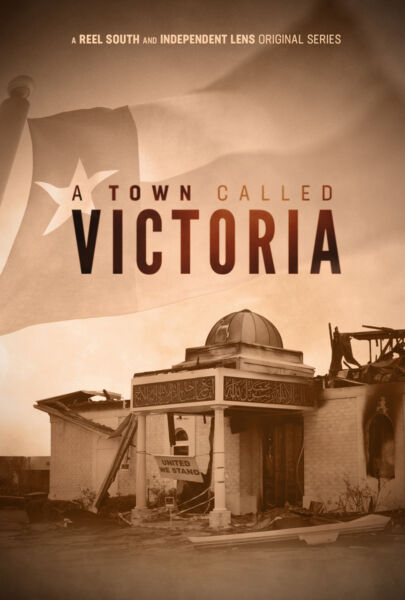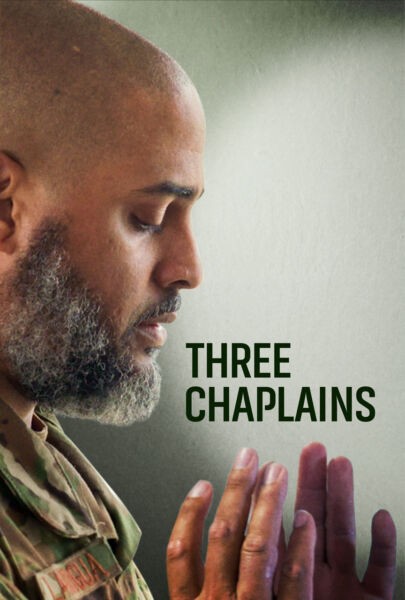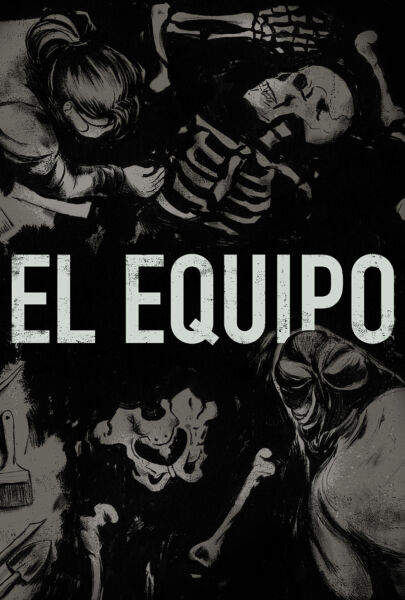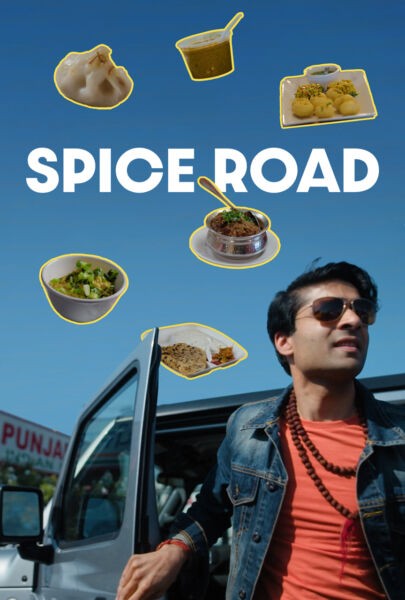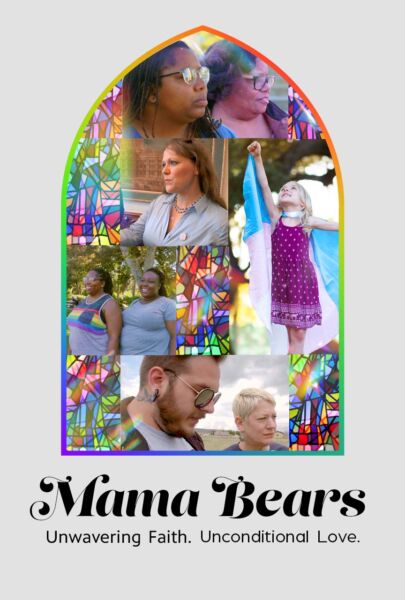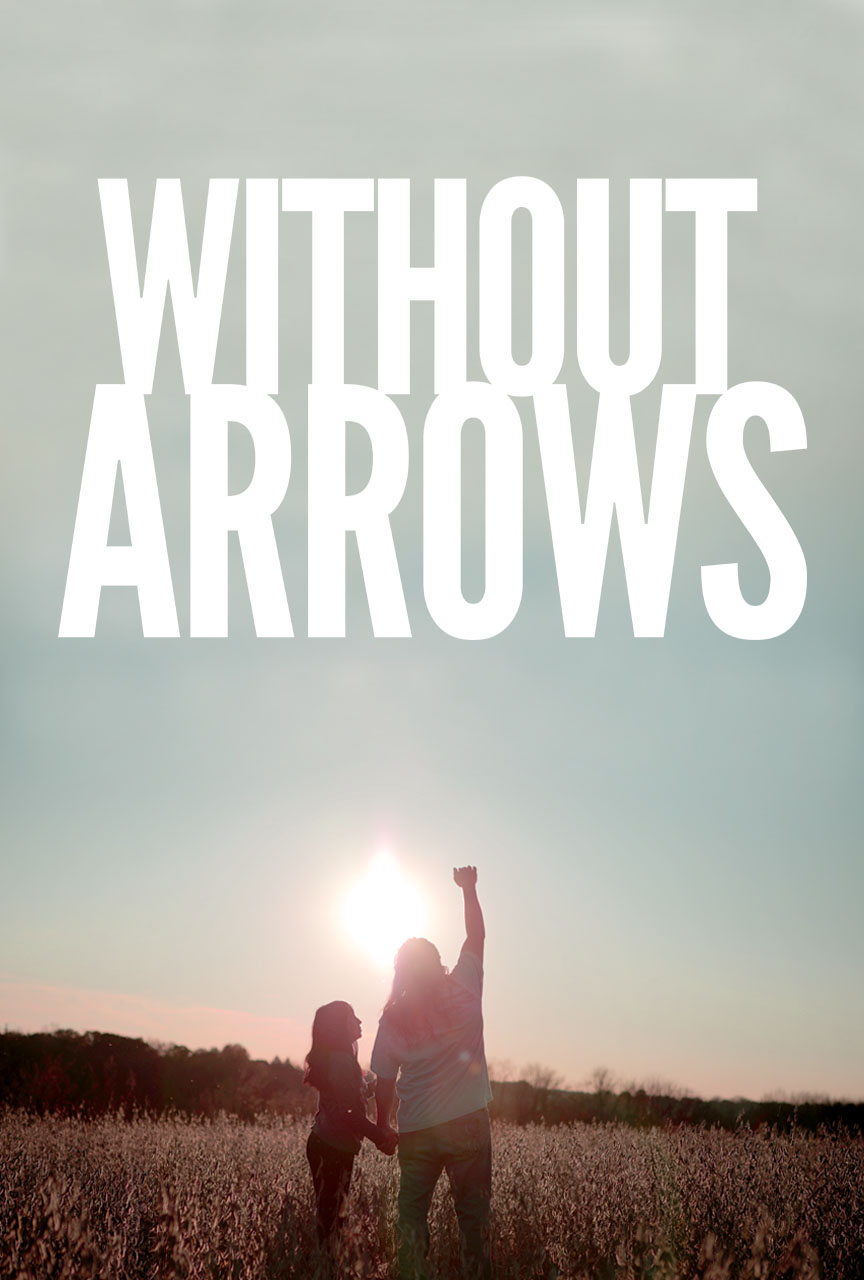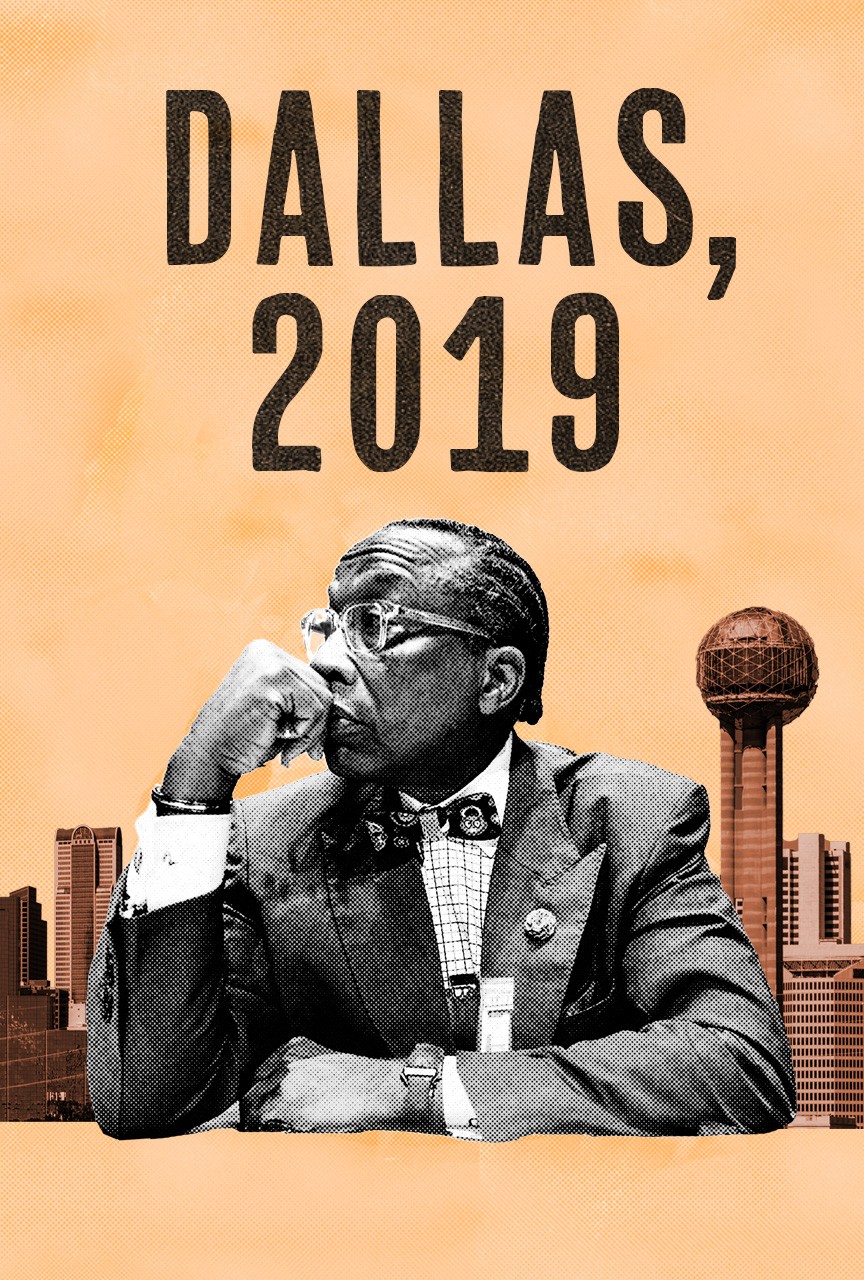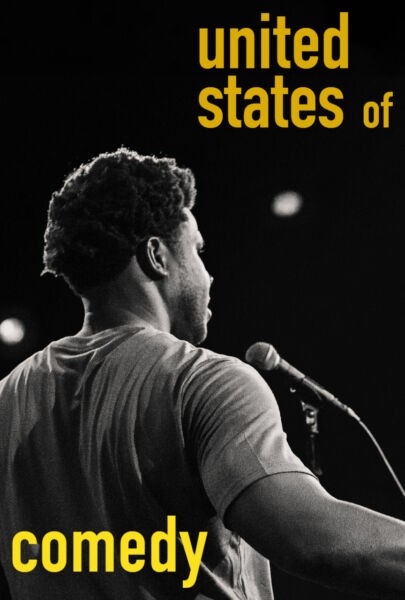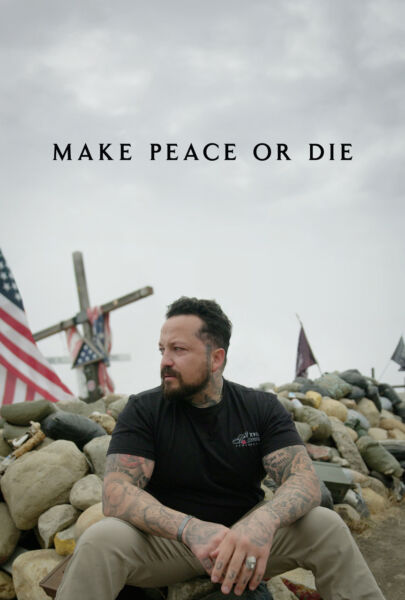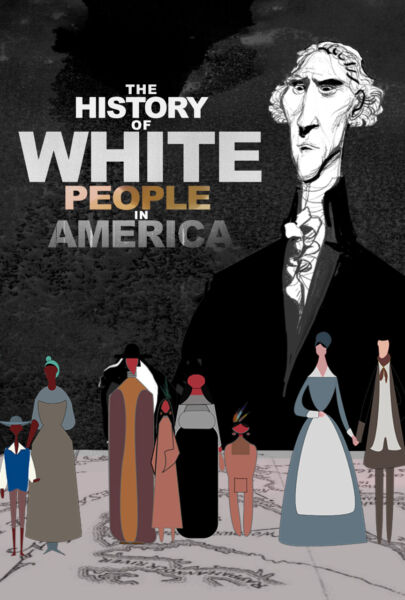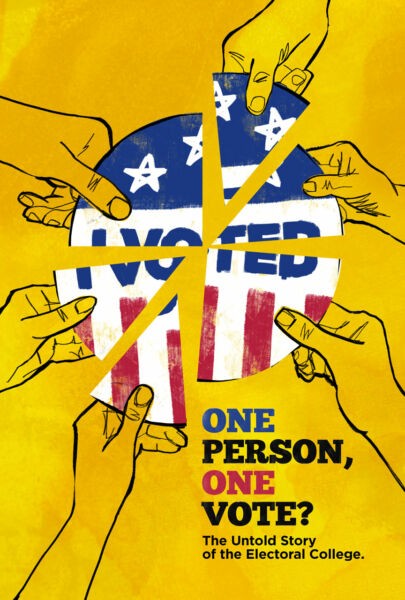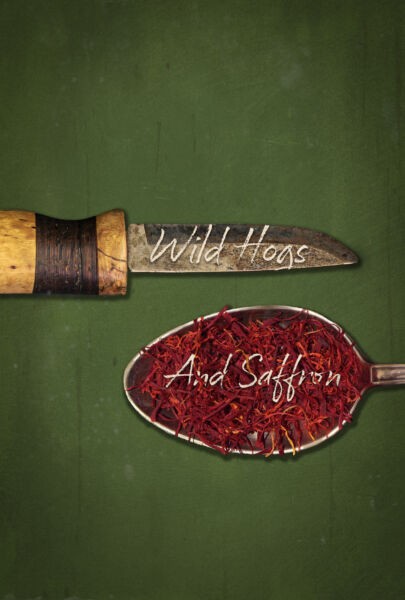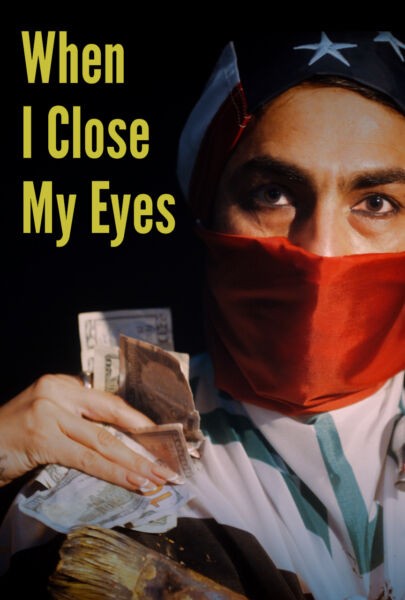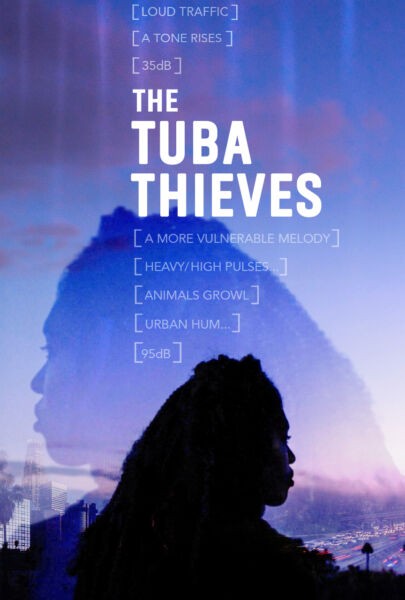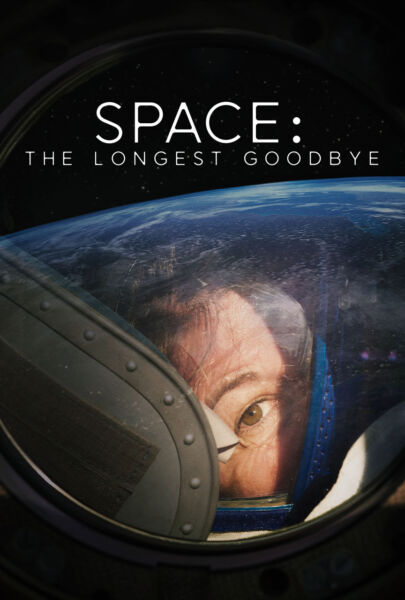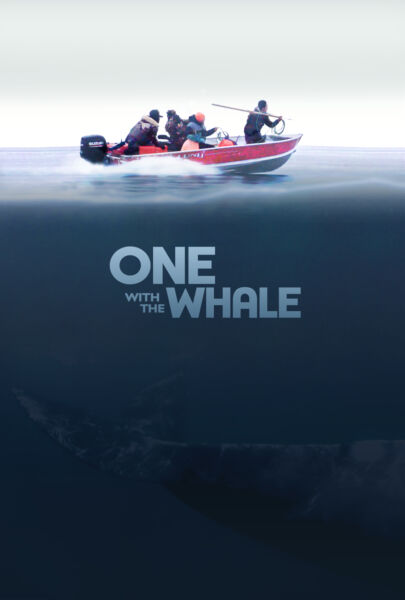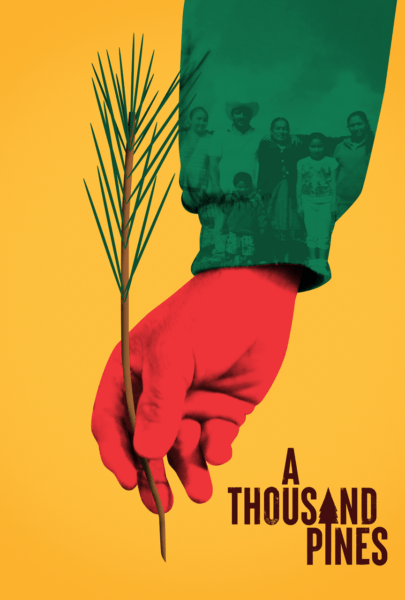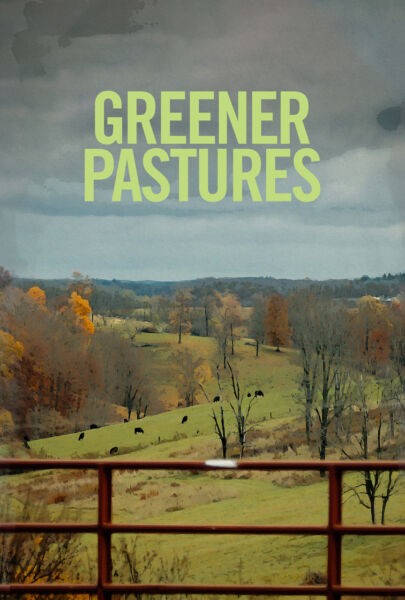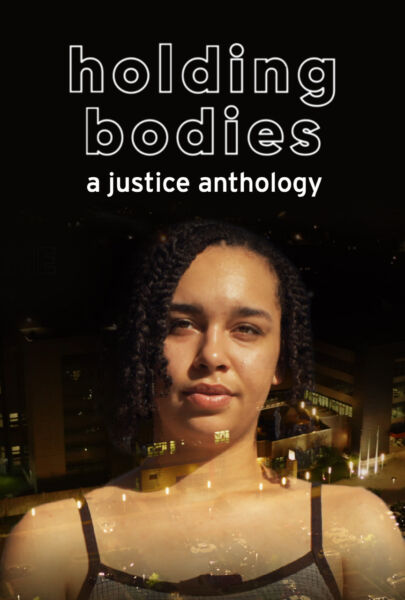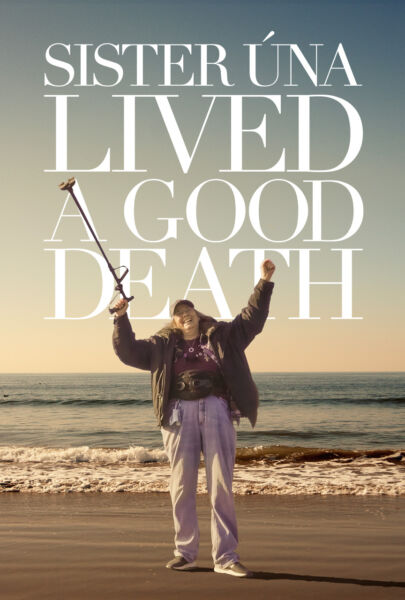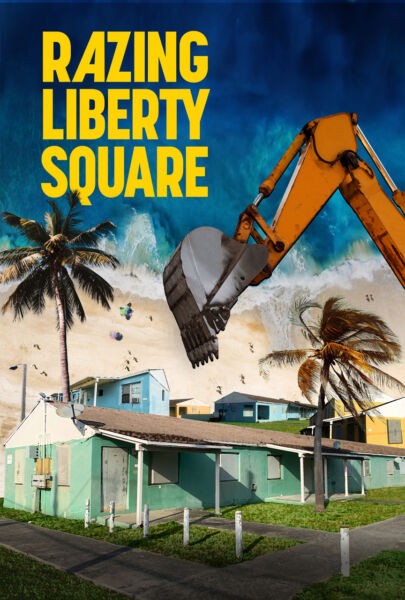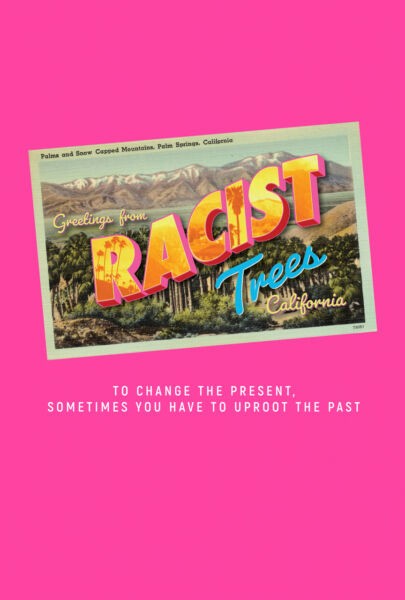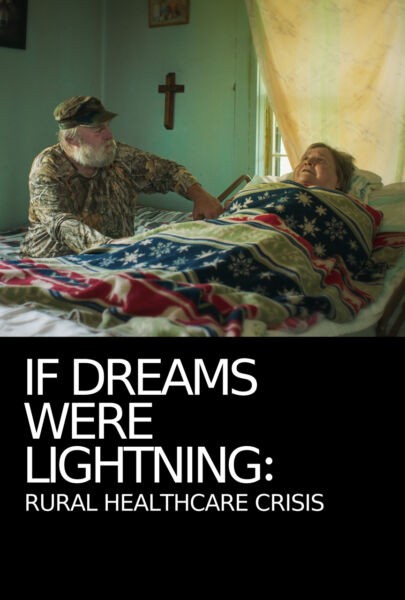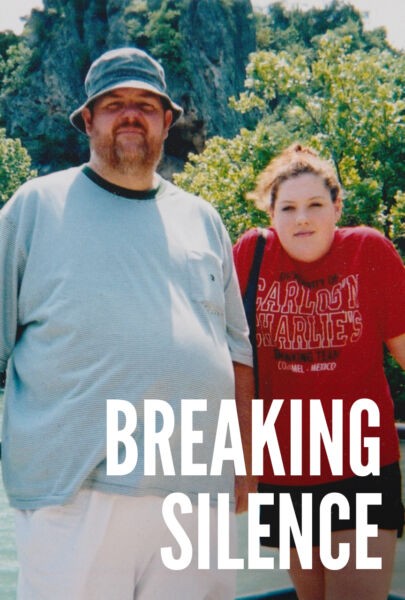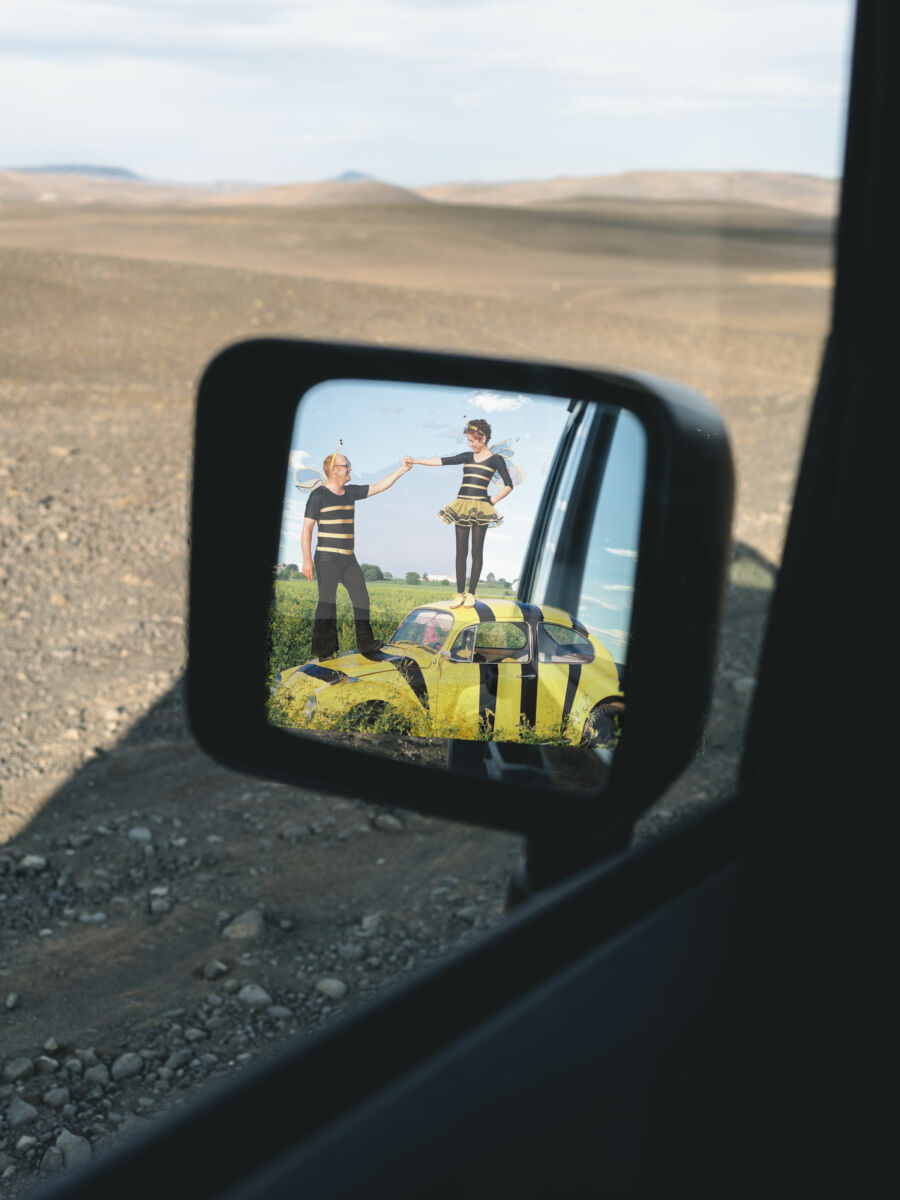
Rev up your virtual station wagon and pack your bags for a road trip across America through documentary film.
No documentary or double feature will capture an entire state’s essence, and not all these films will be featured by the Chamber of Commerce, but I compiled a list of docs that capture a state’s flavor in some unique and special way. This is not meant to represent “definitively without a doubt the very best two documentaries ever about a state,” but ones that tell an important story or reveal a fascinating, singular aspect of that state.
This is about telling different stories and capturing flavors as you virtually travel from place to place, with a two films-per-state rule (though I found ways to cheat my own rule a few times), even if that makes it tough for populous states like California. So, you’ll find me adding bonus “side trips” for some. And then of course, some smaller states simply have less documentaries set or shot there, but I still found some good ones.
(NOTE: The list is in alphabetical order, which would admittedly be a more geographically challenging way to tour the States in reality. But, hey—roll with it.)
Alabama
Hale County This Morning, This Evening: RaMell Ross’s gorgeous, lyrical look at life in a Black Belt county, which was nominated for an Oscar. Ross lived in Greensboro, AL for three years before he made the film. It’s “a captivating film that forces us to reflect on the representation of blackness in a whole new light,” wrote Courtney Small in Cinema Axis.
Pair it with Wrestle: Huntsville’s J.O. Johnson High School was on the verge of closure when this story was filmed. It’s an intimate portrait of four disadvantaged young men on the wrestling team. Closely observed and moving.
Muscle Shoals: The story of a small Alabama town that became the unlikeliest of breeding grounds for some of the most creative and defiant music in American history. At the heart of it was FAME Studios founder, Rick Hall. Interviews with and music by Aretha Franklin, Gregg Allman, Clarence Carter, Jimmy Cliff, Mick Jagger and Keith Richards, Alicia Keys, Percy Sledge, Steve Winwood, Wilson Pickett, and Etta James, as well as Hall’s own touching story, will warm the muscle that is your heart.
Side trips: Jasper Mall; 4 Little Girls; ‘Bama Girl.
Alaska
Attla: Inspiring but little-known story of George Attla, a charismatic Alaska Native dogsled racer who became a legendary sports hero among Northern communities around the world. He was both a canine-whisperer and canny businessman. He also inspired and trained his grandnephew Joe to become a dogsled racer, as George was desperate to preserve the tradition within his struggling community. Full of amazing archival footage depicting an Alaska from years past.
Grizzly Man: Werner Herzog’s brilliant, if chilling, account of a devoted (and perhaps a tad naive and obsessed) wildlife preservationist who lived unarmed, among grizzly bears for 13 summers in stunning Alaska. As is typical with Herzog—no stranger to films about obsession and madness—this is no sentimental nature documentary, but rather a cautionary tale. Maybe better not to watch it right before you visit the otherwise gorgeous Katmai National Park.
Arizona
The State of Arizona: The combative battle over illegal immigration in Arizona that came to a head with Senate Bill 1070—an extreme law designed to make life so harsh for unauthorized immigrants that they’d “self-deport” from the state—is portrayed in tense, vérité style. In some ways, this was the beginning of a new wave of anti-immigrant fervor across the U.S. But there are some iconic AZ moments and people featured, like Sun City elderly voters and controversial former Sheriff Joe Arpaio, the subject of many a lawsuit (and later pardoned for his crimes).
The Living Desert: And for something completely different, this 1953 Oscar-winning nature film broke new ground for nature docs. Even if it may seem quaint and of a different style now, it’s still beautifully shot (with some remarkably dramatic footage) and full of unique Arizona desert wildlife. And you can see what a real-life roadrunner (meep-meep) looks like, which is comical enough.
Side trips: Broken Rainbow; The People’s Newspaper.
Arkansas
The Gospel of Eureka: What a surprising delight—and yes, even a miracle—this doc is, about the town of Eureka Springs, AR, home to both a sizable LGBTQ population and a large Christian citizenry. While that inevitably leads to many comedic culture-clashes, it can also be more fluid than you’d expect. Rather than demonizing anyone, it humanizes everyone. Just watch it.
Command and Control: Remember that time in 1980 when a nuclear warhead almost detonated in Arkansas? Well, most people don’t. But thanks to this tense film based on Eric Schlosser’s book, you can learn about how the tiny Central Arkansas town of Damascus narrowly averted a wide-scale catastrophe. “What gives Command and Control its urgency are both its wealth of information and the implications of its story,” said NPR. “The Titan IIs are gone—even in 1980 they were generally considered obsolete—but the U.S. nuclear-weapons program continues.”
California
Gimme Shelter: Superbly crafted and filmed, it’s often considered one of the great rock docs of all time. But, as comedian/actor Patton Oswalt told Criterion, it’s really as much a horror film and a tragedy. And one that felt like it signaled the official death knell of the ’60s. The Maysles Brothers filmed The Rolling Stones 1969 tour and the infamous Bay Area mega-concert, the Altamont Speedway Free Festival. You watch as the decision to have Hells Angels as bodyguards leads to tragedy at Altamont. This film captured so much it’s almost overwhelming (but there’s also great music in it!)
Pair it up with Wattstax: Another incredible, living document of a musical moment wrapped in a cultural watershed. This vivid film account of the Stax Records festival of musicians and entertainers features the Black community in LA, commemorating the Watts riots from seven years earlier. Footage showcases a huge array of talent: from the Bar-Kays to Carla Thomas and Isaac Hayes, to Richard Pryor and Jesse Jackson.
The Times of Harvey Milk + The Untold Tales of Armistead Maupin double feature: Both of these vivid docs feature incredibly central figures in LGBTQ history and politics. Harvey Milk and Armistead Maupin are not only important parts of the American Zeitgeist, but both so iconically part of San Francisco history. Maupin’s story follows his evolution from a conservative son of the Old South to a gay rights pioneer, whose novels have inspired millions to claim their own truth. Rob Epstein’s Oscar-winning film traces Milk’s rise as San Francisco’s first openly gay supervisor, a life that ended in unspeakable tragedy—yet whose legacy has never died.
Side trips (among so many others): Dolores; Garlic Is as Good as Ten Mothers; Plagues & Pleasures on the Salton Sea; Dogtown and Z-Boys; Los Angeles Plays Itself; General Magic.
Colorado
The Rider and the Wolf: Whatever happened to legendary Colorado mountain bike innovator Mike Rust, who seemed to vanish in thin air? This ingratiating doc not only explores that mystery (which was officially solved, in a sad way, after the film) but also shows the development of off-road cycling in Rocky Mountain towns intersecting hippies, outdoor enthusiasts and mechanical geniuses (Rust was all three). A celebration of a beloved figure in this sport—who loved his “ordinary bikes” (Penny Farthings or High-Wheelers)—and full of great archival footage of particular interest for bike enthusiasts.
Trinidad: Fascinating, unexpected little doc about a Colorado town that was once a frontier outpost but went on to become the “sex change capital of the world.” The story centers around a groundbreaking surgeon and three amazing transgender women—including the first trans woman to perform reassignment surgeries. (This southern CO town was also home to the first woman newspaper sports editor, a huge mining strike, and one of the first hippie communes.)
Side trip: Voyeur; Rolling Papers.
Connecticut
Newtown: This is a hard one, but too important and powerful to leave aside. The unspeakable Sandy Hook tragedy especially shook Connecticut and Newtown—and America—to its core. Abigail Disney’s beautifully made film is more about the aftermath and a community searching for healing.
Wordplay: The American Crossword Puzzle Tournament is held yearly in Stamford, CT. This fun, playful, and surprisingly tense doc about the tourney and the magical world of crosswords features a host of celebrity puzzle players, as well as famed creators Will Shortz and Merl Reagle (showing you how he creates his tough puzzles).
Side trips: Murder on Middle Beach; Pizza, a Love Story (New Haven pizza, known as “apizza,” is arguably the best in the U.S., and a road trip through CT requires it!)
Delaware
For They Know Not What They Do: Moving, humane, unpatronizing documentary about Christian families with LGBTQ children. It features the powerful story of Sarah McBride, the transgender activist turned Delaware state senator, and includes her parents, strict Presbyterians who have struggled to come to terms with their trans daughter.
That’s it—that’s your one film, Delaware—sorry! I can’t squeeze Dead Poet’s Society in here as a documentary (it was filmed in the state), but if you think of other good documentaries set in Delaware, feel free to post them in the comments.
Florida
The Swamp: The Everglades is an important, unique, and in some ways unforgiving ecosystem. This PBS American Experience doc does an outstanding job telling the complicated story of humanity’s arrogant attempt to conquer one of the most challenging environments. Expertly told through the lives of a handful of colorful and resolute characters, from hucksters to politicians to unlikely activists, there’s a lot in here. And it all shows what made Florida what it is—for better and for worse.
Vernon, Florida: An early film by one of America’s most unique and important documentarians, Errol Morris, this looks at the eccentric residents of one, small Florida town. It’s (deceptively) simpler than some of his later films (The Fog of War, The Thin Blue Line), but leaves one hell of an impression, nonetheless. Deadpan-funny, these characters and interviews are definitely in the “truth is stranger than fiction” camp.
Side trips: Florida Man; Wild Florida; Pahokee; Some Kind of Heaven.
Georgia
John Lewis: Good Trouble: Dawn Porter’s (Trapped, Spies of Mississippi) beautifully done, powerful account of legendary U.S. Representative John Lewis’s life, legacy, and more than 60 years of extraordinary activism in Georgia and beyond. It’s a story that remains as timely and relevant as ever, with his home state as the epicenter of a renewed battle over voting rights. Lewis helped pave the way and is still doing so even after his death a year ago.
Athens GA: Inside Out: Reflecting some of my own bias here, this music doc (featured on MTV) was part of my musical coming of age as a youngster and an intro to the incredible alternative music scene that popped out of Athens in the ‘80s. It features legendary bands like R.E.M. and The B-52’s, but also folk artist Howard Finster, poet John Seawright, and shoulda-been-famous bands like Pylon, Flat Duo Jets, the Bar-B-Que Killers, Dreams So Real, and Love Tractor. Sure, it’s a very-1987 time capsule, but an indelible one.
Hawaii
Out of State: Native Hawaiian filmmaker Ciara Lacy’s intimate, ultra-touching look at the lives of Native Hawaiians who are sent thousands of miles away from the tropical islands to a private prison in the Arizona desert. Not as much a fish-out-of-water story as it is, ultimately, about two men coming home to Hawaii—to a rarely-seen side of the state—looking for a fresh start in a society which makes that road as difficult as possible.
Riding Giants: Stacy Peralta’s doc depicts the evolution of surfing giant waves at Hawaii’s Waimea Bay from the 1950s to modern days. According to the producer, they wanted to make a film that would show “why people choose to devote their entire lives to the pursuit of riding waves,” and I think this film does that so well. This is one of my fave surf movies, full of not just gorgeous Hawaii waves but great music, too.
Idaho
Made in Boise: Fascinating doc that intimately explores a surprising aspect of Boise, the “City of Trees”: since Idaho has no laws governing surrogacy on its books, the place has become a surrogacy epicenter. In Boise, it is estimated that 1 in 15 mothers will carry a baby for a stranger at some point in her life. Regardless of how you feel about the subject, you’ll get to know several couples, straight and gay, and get to understand why they are going through this difficult process.
Indian Relay: Featuring teams from the Shoshone-Bannock Nation in Idaho, and the Crow and Blackfeet Nations of Montana, this is a beautifully shot glimpse at a little-known sport enjoyed and practiced by men and women from tribal nations across the Rocky Mountain West. Features gorgeous horses and talented riders who bond over a shared, pure love of this majestic sport.
Side trip: State Legislature; Being Evel.
Illinois
Hoop Dreams: It’s impossible to not have Steve James’s groundbreaking epic (three hours but never boring) instantly come to mind when thinking of both Chicago and Illinois. It’s that impactful. The story features two Black high school students, William Gates and Arthur Agee, who dream of becoming professional basketball players. This rich film set in Chicago neighborhoods, like Cabrini-Green and East Garfield Park, was originally pitched as a half-hour special on PBS about the streetball and basketball culture in the Black community, according to a 2014 oral history. But it developed into an epic, expansive look at young Black men struggling to transition to an adulthood, with or without sports. Roger Ebert once called it “one of the best films about American life that I have ever seen,” and it remains so. (Double feature this with one of the side trips below.)
The Real Dirt on Farmer John: Taggart Siegel’s lovely doc about the life of Midwestern organic farmer John Peterson in Caledonia, IL. In some ways, Peterson is both a maverick and a pariah in his community (and inarguably a quirky eccentric) who shows there’s more than one way to get “back to the land.” It’s also the story of Peterson’s farming family traditions and full of sweet home movies.
Side trips: The Interrupters; Finding Yingying.
Indiana
Devil’s Playground: Very compelling, even haunting account about the experiences of several Amish teens in LaGrange County, Indiana who must decide whether to remain in or leave their community and faith during the period known as rumspringa (“running around”). They enter the “English” (non-Amish) world to experience partying, drinking, illegal drugs, and pre-marital sex. Who will commit to return after getting it out of their system, and who are gone forever?
Monrovia, Indiana: Another beautifully shot, “it is what it is” documentary by legendary filmmaker Frederick Wiseman capturing the people, places, jobs, and everyday moments of a small Indiana farming town.
Iowa
Troublesome Creek: A Midwestern: Oscar-nominated, Peabody-winning film about a family struggling to save the Iowa farm that’s been with them since the 19th century. A beautifully crafted, poignant family affair—it’s narrated by their daughter who directed with her husband. Full of the sad facts of life when it comes to American farming in the last several decades (bankruptcy, foreclosures, auctions) and the painstaking process of letting go, but it is immediate and rewarding and honest.
Storm Lake: What’s this? A small-town newspaper that still exists? (Consider that in a 15-year span, 1 in 4 U.S. newspapers have shut down.) Honest reporting? The family-run Storm Lake Times won a Pulitzer Prize for their reporting, challenging corporate agriculture in Iowa; and Editor Art Cullen has enough pull and reputation to draw Democratic presidential candidates to host a forum in Storm Lake. A story of both the past hanging on and a bit of hope for the future, with nothing less than the legacy of credible journalism and democracy at stake.
Kansas
Home Movie: A Topeka, Kansas couple is featured in only part of this film by Chris Smith (American Movie), which looks at several eccentric, customized homes across the U.S. But that Topeka house is quite memorable: they turned an abandoned missile silo into, as Scott Tobias wrote, “an underground shrine to Native American mysticism and a space that redefines the meaning of the word shelter.”
Open Secret: Lo-fi, but a very powerful, and even shocking, personal doc about the Kansas filmmaker and his family. Smith documents his attempts to discuss with his family a long-suppressed secret about his birth mother. Beyond being a deeply personal film, it’s also about what it means to live in the “heartland,” in a small Kansas town where everyone knows everyone and—just about—everything.
Side trip: The Disrupted.
Kentucky
We Believe in Dinosaurs: Fair-minded, but enervating story of the Creation Museum in Kentucky’s huge new $120 million Noah’s Ark-inspired theme park, and the battle between the museum’s religious “scientists” (who believe dinosaurs and man lived side by side), and actual scientists in the state (who find its teachings complete madness). Even if you don’t believe in the museum’s mission, you’ll find the way they try to build exhibits fascinating, all while the film gets to the root of the religion vs. science battles dividing America.
Harlan County USA: Barbara Kopple’s stirring and humane Oscar-winning 1976 documentary about the Brookside Strike of 1973. Attempting to unionize, 180 coal miners and their wives struck against Eastover Coal Company’s Brookside Mine and Prep Plant, owned by Duke Power. The dignity of these hardscrabble workers never flags, despite the dangers they (and a couple of times the filmmakers!) face every day.
Louisiana
Rodents of Unusual Size: The title gets the attention of Princess Bride fans, but this appealing doc is about a somewhat unappealing, invasive mega-rodent: the nutria. Its ruination of bayou ecosystems is multi-layered, informative, and sometimes even…colorfully fun. The film takes some side trips of its own, too, including cooking nutria gumbo.
When the Levees Broke: Spike Lee’s “requiem in four acts” looks at how the lives of New Orleans residents irrevocably changed after Hurricane Katrina hit in 2005. The Category 5 storm caused 1,800 deaths and $125 billion in damage to the area. Of the film, Lee said, “These are not people who will disappear quietly—they’re accustomed to hardship and slights, and they’ll fight for New Orleans.” The doc is sorrowful and tragic and exasperating. But it’s also beautiful and shows the resiliency of Crescent City citizens, while ending with some notes of hope (a story that continues to unfold). Terrence Blanchard’s evocative score adds to the emotional pull. Lee returned to New Orleans for a follow-up, If God Is Willing and Da Creek Don’t Rise.
Side trips: Les Blank’s Always for Pleasure; Trouble the Water; The Neutral Ground.
Maine
The Way We Get By: An ultra-touching look at senior citizens in Bangor, Maine, who have been greeting American troops as they pass through Bangor, returning from serving overseas. So full of humanity and heart, you’ll want to give it a hug.
Dawnland: The Wabanaki people of the upper Northeast (of what is now called Maine) are there to greet the light; they are “the people of the dawn.” They also suffered terribly at the hands of Maine’s child welfare system, which for decades placed Wabanaki children in foster or adoptive homes. The presumption was that assimilating them into white society would be “for their better.” This is a powerful and cathartic look at righting a wrong, and once again timely given recent revelations in Canada.
Maryland
Charm City: An intimate, even inspiring look at people in a struggling Baltimore neighborhood, working together to make change. Filmed during the lead up to, and the aftermath of, Freddie Gray’s death in police custody, Charm City is powerful cinema vérité. It features characters reminiscent of the fictional “Bawlmore” series, The Wire, as well as future Baltimore mayor, Brandon Scott.
Heavy Metal Parking Lot: A cult classic, once passed around on VHS tapes and referred to by Deadspin as the “Citizen Kane of wasted teenage metal.” This simple, short documentary about small groups of young heavy metal fans, tailgating in the parking lot outside the Cap Centre in Landover, MD during the mid-80s, ROCKS. The perfect document of peak Heavy Metal fandom from the era.
Massachusetts
We Still Live Here: Fascinating story of the revival of a language that had been silenced for a century, in the Wampanoag nation of southeastern Massachusetts. It’s the first time a language with no native speakers has been revived in America. Linguists will be inspired by the work of Jessie Little Doe, a Wampanoag social worker, and her cohorts as they fight to restore their culture, in the story of how language can come home again.
Young@Heart: Senior citizens in Northampton, Massachusetts, averaging a mere 80 years of age, band together as part of a challenging chorus. They sing everything from James Brown to the Ramones and Sonic Youth(!) in this uplifting, even raucous story. While it occasionally lapses to cloying, it’s one of the most moving and inspiring looks at aging that I can recall—facing mortality with a song in your heart.
Side trips: So Much So Fast; No Look Pass; Call Me Lucky.
Michigan
BURN: Talk about a thankless job. The firefighters of Detroit’s Engine Company 50 on the eastside of the city are constantly fighting blazes in a place where many buildings are abandoned (a fireman in the doc calls the area “Katrina without the hurricanes”), and the department is always under-funded. But while the fire action is harrowing and incredible, it’s the human stories of this tight-knit crew that add depth and hope.
Who Killed Vincent Chin?: The title of this important, enervating doc is meant to be paradoxical, since we know who killed Chin. An engineer who had fulfilled his dream of designing automobiles in Detroit, Chin was murdered the summer of 1982. After an altercation at a bar, Chin was beaten to death by white men with a baseball bat. Director Christine Choy gets so many great interviews and captures so many indelible moments in a doc that is both art and great journalism: exploring a corrupt justice system, racial hatred, and economic woe—all still as urgent and relevant today as it was 30 years ago.
https://www.youtube.com/watch?v=Nxq80D5LZb0
Side trips: Roger & Me; The Life and Times of Hank Greenberg; Detropia.
Minnesota
American Dream: The compelling, enraging story of the unsuccessful 1985-86 Hormel strike by meatpackers against the Hormel Foods corporation in Minnesota. It is a worthy follow-up to Barbara Kopple’s earlier classic, Harlan County, U.S.A. Roger Ebert wrote, “This is the kind of movie you watch with horrified fascination, as families lose their incomes and homes, management plays macho hardball, and rights and wrongs grow hopelessly tangled…The people in this film are so real, they make most movie characters look like inhabitants of the funny page.” Like some other films on this list, this is an older film that feels relevant all over again in 2021.
Minnesota Hardcore: Totally my bias here, since I musically came of age listening to a lot of this music, but I greatly enjoyed this Twin Cities PBS web series on the explosion of punk rock that came outta Minneapolis in the ’80s and after. Do you remember Husker Du? Well, even if you don’t, you’ll jam to their story, the Replacements, and a lot of other bands that deserved more love in the city that, yes, also brought us Prince.
Side trips: Accept the Call; The Eyes of Tammy Faye; Jim Crow of the North; Laura Ingalls Wilder: Prairie to Page.
Mississippi
LaLee’s Kin: The Legacy of Cotton: Albert Maysles co-directed this Oscar-nominated story of the vicious cycle between poverty and the lack of educational opportunity for Black people in the Mississippi Delta, enduring for 150 years after the abolition of slavery. But this is no historically didactic film. Its personal, humanistic approach, focusing on both a struggling school district and a single Delta family, makes the point all the more powerful, moving, and devastating.
Freedom Summer: The history of Mississippi is completely intertwined with the history of America’s civil rights movement as much as with the legacy of the Confederacy. This is an expertly made PBS documentary on the 1964 Mississippi Freedom Summer, when more than 700 student activists took segregated Mississippi by storm and put a world spotlight on the systematic exclusion of African Americans from the political process. This is living, breathing history: the story of allyship in a sometimes-deadly fight for American democracy.
Side trip: Spies of Mississippi.
Missouri
Rich Hill: Cinematically gorgeous and quietly powerful doc about the lives of three boys, living in an impoverished Missouri town (where the filmmakers’ parents grew up). You get to know the boys so well that you’ll be rooting hard for them to break out of their cycles of poverty and family dysfunction. There is ultimately some hope that they will do so, though your heart will wobble along the way.
Ferguson Rises: A film about the epicenter of movements that arose from the aftermath of a tragedy: the 2014 shooting by police of young Michael Brown, Jr. in Ferguson, MO. Both are absolutely unflinching. While they capture different perspectives and people, they share the impassioned battle cries from those fighting for a more equal future.

